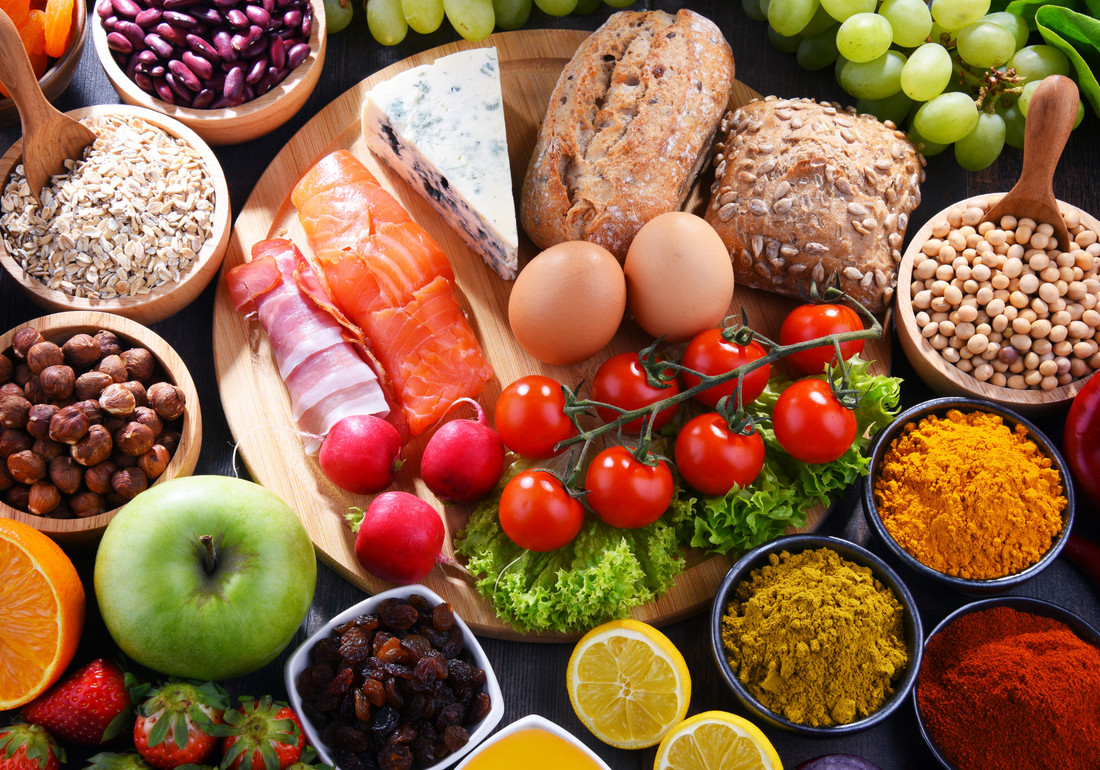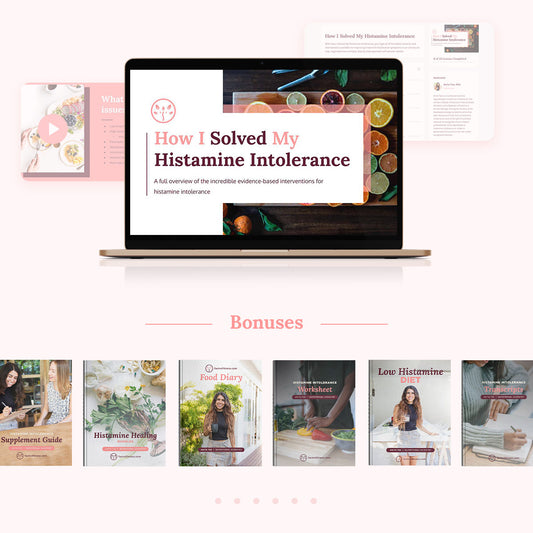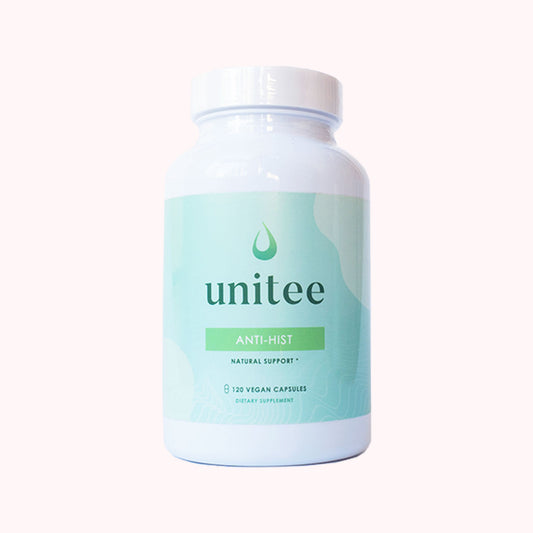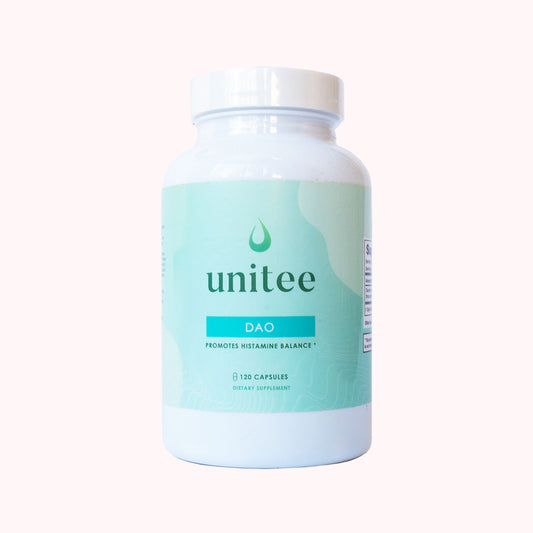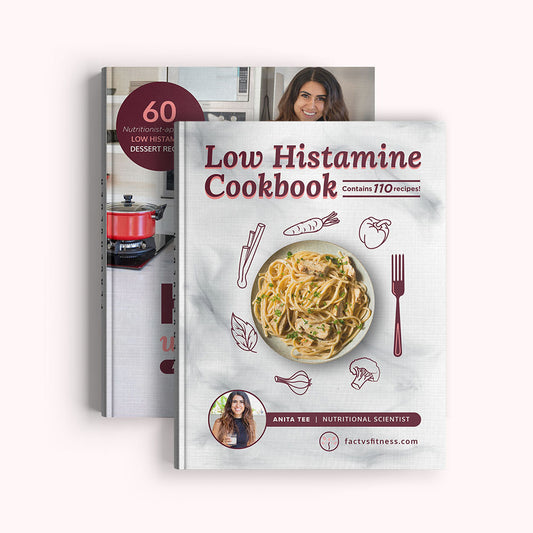Do you want a low histamine food list that ease symptoms and tells you exactly which high histamine foods to avoid?
A list of low histamine foods is essential for anyone who suffers from symptoms of histamine intolerance.
Similar to seasonal allergies or a food allergy, a reaction to histamine is inflammatory. Histamine is a neurotransmitter that travels through your body in your bloodstream and helps break down food in your stomach.
But, histamine is also a part of a healthy immune system that sets off a warning when your body needs to fend off any possible illnesses.
When triggered, mast cells in your tissue release histamine into the bloodstream, which causes red blood cells to become bigger and helps white blood cells find the foreign pathogen - or threat to your immune system.
Since histamine is something that your body naturally makes, eating high histamine foods usually won’t have negative side effects.
However, for people who have a hard time breaking down excess histamine, eating certain foods can trigger symptoms or make them even worse.
For these individuals, eating healthy, natural foods such as vegetables and fruits simply isn't enough. You need to be focussing on low histamine fruits, vegetables and all other foods.
Using a histamine intolerance foods list
Knowing which low histamine foods to fill your shopping cart may help you manage a histamine intolerance and can be a part of an elimination diet to help you understand which foods affect you the most.
Though it can be difficult to diagnose, there are some more common histamine intolerance symptoms that are noticeable after eating high histamine foods.
These could include hives, headaches, digestive distress, anxiety, trouble sleeping and more. They can also be more complicated, moving from these allergy-like reactions to skin issues and persistent digestive symptoms.
Although the disorder may seem confusing at times, the bright side is that no matter what type of symptoms you’re experiencing, they can be controlled very quickly when you eliminate high histamine foods and replace them with these low histamine foods from the list below.
Why try a low histamine diet?
1) Confirmation of histamine intolerance
To fully diagnose histamine intolerance, you should always work with a doctor or natural healthcare practitioner.
However, diagnosis can be difficult due to the multi-symptomatic nature of histamine intolerance. Eliminating certain foods from your diet can help to identify histamine issues, as can trying an at-home test for histamine intolerance.
The low histamine diet is a simple, at-home method for understanding your health and symptoms better.
2) Fast relief from histamine intolerance symptoms
Many people see symptomatic improvement within 1-2 weeks of removing high histamine foods from their diet.
This improvement also gives the body a break from the symptoms that worsen health, such as inflammation and stress. During this time, you can implement histamine-healing therapies that can work much more effectively when your body is less distressed.
3) No guessing what to eat on a low histamine diet
This low histamine food list removes the guesswork and allows you to really see how the low histamine foods and high histamine foods on this list affect you.
Additionally, we include foods that may not be directly high in histamine, but can destabilize mast cells or damage body systems that commonly need to be repaired during histamine intolerance.
Which low histamine foods list is the right one to use?
The main issue with finding the right low histamine food list is that many foods can be a topic of contradiction. It’s hard to find two identical lists, leaving you a bit confused about your optimal histamine diet…
As a histamine intolerance researcher, myself and a team of scientists have put together the most comprehensive, up-to-date low histamine food list available online.
Our low histamine food list calls attention to the foods that will liberate histamine or destabilize mast cells. Although these foods may not be high in histamine themselves, they can indirectly increase histamine levels and end up triggering symptoms.
In addition, this food chart also includes all high histamine foods, so that you know exactly what to avoid. Knowing both of these lists is important for empowering you to take control of your diet and symptoms.
My goal is to give you the information you need to address histamine intolerance from all angles and experience symptomatic relief, regardless of the underlying cause.
The Histamine Intolerance Food List
Importantly, I recommend downloading my free Low Histamine Diet Guide.
It not only contains the full histamine intolerance foods list, but additional resources to improve symptoms, such as a food diary, special recipes and details on how to find the root cause.
By downloading the guide you can also save the diet to your phone or print it out to have on-hand when you're at home or doing groceries.
| ALLOWED (Low Histamine Foods List) | RESTRICTED (High Histamine Foods List) |
| Vegetables - Allowed | Vegetables - Restricted |
|
|
| Fruits - Allowed | Fruits - Restricted |
|
|
| Meat, Poultry and Fish - Allowed | Meat, Poultry and Fish - Restricted |
|
|
| Eggs - Allowed | Eggs - Restricted |
|
|
| Fats and Oils - Allowed | Fats and Oils - Restricted |
|
|
| Spices and Herbs - Allowed | Spices and Herbs - Restricted |
|
|
| Nuts and seeds - Allowed | Nuts and seeds - Restricted |
|
|
| Legumes - Allowed | Legumes - Restricted |
|
|
| Breads and Cereals* - Allowed | Breads and Cereals* - Restricted |
|
|
| Milk and Dairy* - Allowed | Milk and Dairy* - Restricted |
|
|
| Sweeteners* - Allowed | Sweeteners* - Restricted |
|
|
| Other - Allowed | Other - Restricted |
|
|
|
Beverages - Allowed |
Beverages - Restricted |
|
|
* Starred food categories are not essential to include in your diet at this time, and should be consumed in minimal amounts or avoided entirely to maximize health benefits and symptom relief during your diet.
Tips for managing histamine intolerance
Managing histamine intolerance is easier than you think when you have the right info.
Here's a few tips to get started:
1) Avoid most probiotics - although probiotics are great for the gut, many strains produce histamine. If you choose to take probiotics, it's important to double check that your supplement only contains low histamine probiotic strains.
2) Find the root cause - histamine intolerance can arise from a variety of root causes such as H. pylori infection, or a genetic inability to produce DAO enzymes that break down histamine. Understanding your root cause can help you to better direct your therapies.
3) Download the free low histamine diet guide. In addition to the low histamine foods list, it provides resources such as a food diary, recipes and specific details of how to find the root cause in order to improve symptoms, for good!

